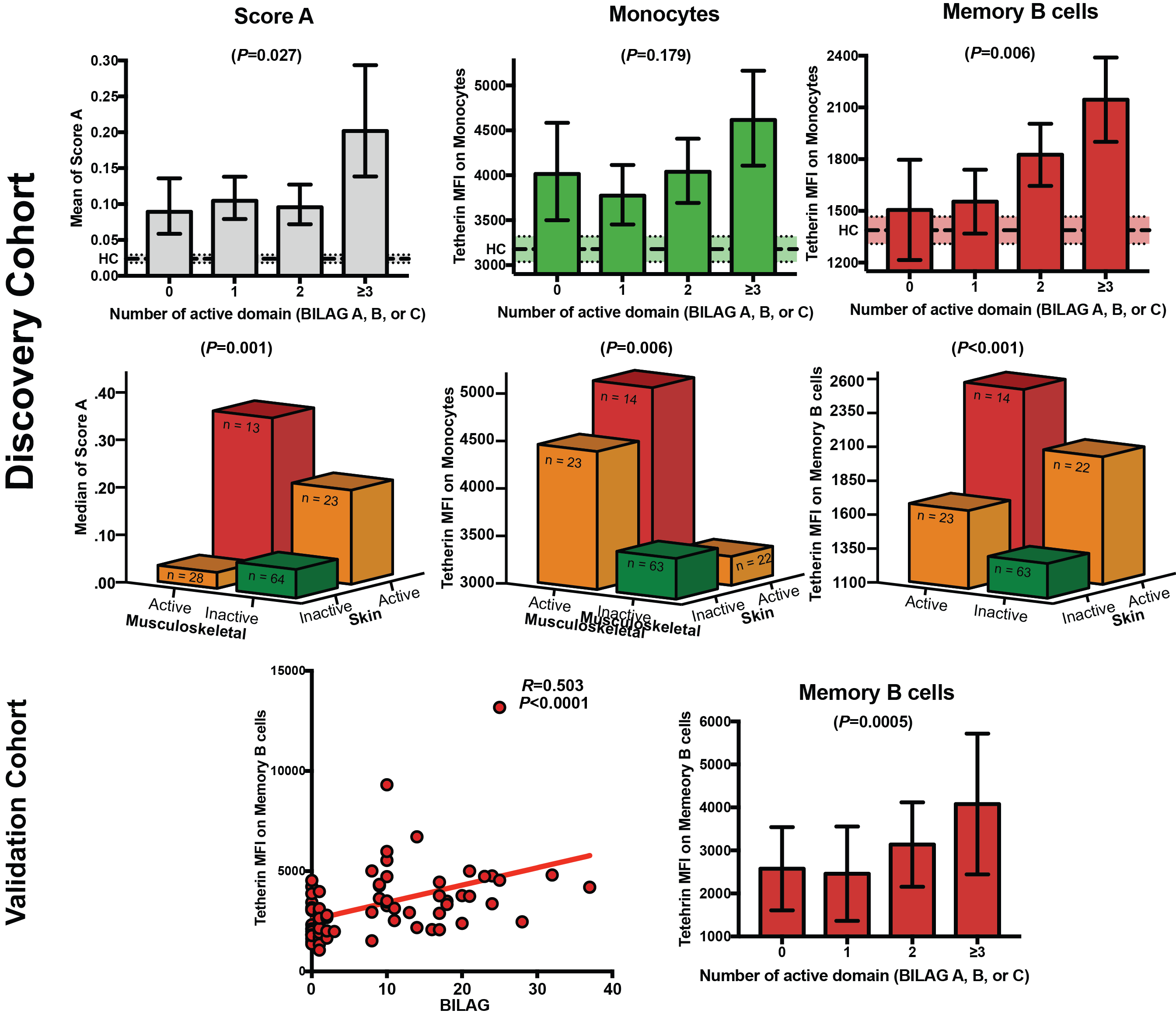Session Information
Date: Monday, November 6, 2017
Title: Systemic Lupus Erythematosus – Clinical Aspects and Treatment III: Biomarkers
Session Type: ACR Concurrent Abstract Session
Session Time: 4:30PM-6:00PM
Background/Purpose:
SLE is an IFN-I-mediated disease with dysregulated handling of self-nuclear antigens triggering anti-viral immune mechanisms. The level of IFN-I activity appears to stratify for disease severity and therapy response but existing studies using IFN-stimulated gene (ISG) expression signatures weakly correlates with clinical features. ISG expression influenced by cellular composition of sample and individual cell responses. CD317/Tetherin is a cell surface protein encoded by the interferon-stimulated gene BST2. So we aimed to develop a fast, convenient assay to measure cell-specific IFN-I suitable for analysis of large cohorts of patients using flow cytometry correlates with disease activity and predicts clinical flare.
Methods:
We developed a flow cytometric assay for cell-specific IFN-I response using tetherin, as well as ISG gene expression score derived from 18 well known. FACS sorting was used to evaluate cell-specific interferon response by both assays. IFN-I biomarkers were then evaluated against diagnosis, disease activity in a discovery cohort of 156 SLE patients with 30 ACPA+ANA- RA (DAS28>3.2) and 22 healthy controls. A longitudinal validation cohort of 80 patients with monitoring of tetherin in an independent routine diagnostic laboratory was recruited to confirm findings and test prediction of flares.
Results:
In vitro, ISG expression score predominantly reflected monocyte signal and many ISGs responded to both IFN-a and IFN-g. Flow cytometric analysis of tetherin (BST2) accurately determined cell-specific response to IFN-I in a dose-responsive manner and was more selective for IFN-I.
In the discovery cohort, B cell tetherin was associated with diagnosis and clinical disease activity equally or more closely than gene expression score or monocyte tetherin. Memory B cell tetherin was increased with renal (p=0.005) or haematological (p=0.005) activity with no differences in ISG score for these domains (p=0.152, p=0.989 respectively). The validation cohort confirmed the relationship between B cell tetherin and disease activity 
and also, showed that higher B cell tetherin predicted increased risk of future clinical flares. (Fig 2)
Conclusion:
The B cell response to IFN-I predicts clinical features of SLE, and tetherin provides a convenient, validated method to analyse this pathway in routine clinical practice. Tetherin is also a tool for future research in cell-specific IFN-I response in a broad spectrum of other diseases.
To cite this abstract in AMA style:
El-Sherbiny YM, Md Yusof MY, Psarras A, Hensor EMA, Kabba K, Mohamed A, Wittmann M, Emery P, Vital EM. A Novel Type I Interferon Biomarker on B Cell Predicts with Disease Activity in SLE and Can be Measured By Cell Surface Tetherin (CD317) [abstract]. Arthritis Rheumatol. 2017; 69 (suppl 10). https://acrabstracts.org/abstract/a-novel-type-i-interferon-biomarker-on-b-cell-predicts-with-disease-activity-in-sle-and-can-be-measured-by-cell-surface-tetherin-cd317/. Accessed .« Back to 2017 ACR/ARHP Annual Meeting
ACR Meeting Abstracts - https://acrabstracts.org/abstract/a-novel-type-i-interferon-biomarker-on-b-cell-predicts-with-disease-activity-in-sle-and-can-be-measured-by-cell-surface-tetherin-cd317/

